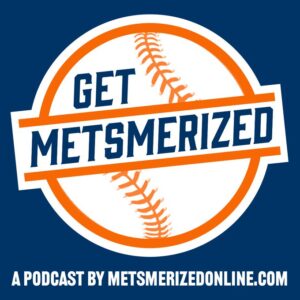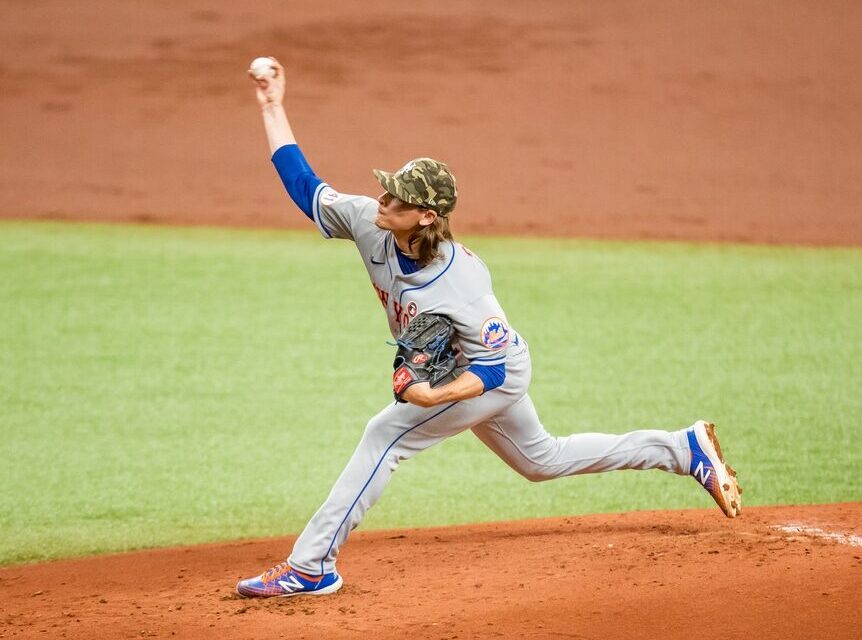
Credit: Mary Holt-USA TODAY Sports
Drew Smith is ready for a high leverage role. All of the necessary traits appear for the right-hander to contribute during the most pressure-packed innings this summer in Queens. Smith made a critical pitch change. His velocity paired with spin rate play, especially up in the zone. And, he doesn’t get himself into trouble. The bridge to Edwin Diaz has a shaky foundation. So why not let Drew be a pillar of bullpen success?
Smith’s Career Arc
Drafted by the Detroit Tigers in the 3rd round of the 2015 MLB June Amateur Draft from Dallas Baptist University (Dallas, TX), Smith was 21-years-old when he made his professional debut for the Western Michigan Whitecaps. He performed well in the lower levels in 2015, striking out 38 of 116 batters faced (32.8 K%) and a minuscule 0.71 WHIP over 31.0 innings.
In 2017, Drew Smith was shipped to Tampa, pitching for four different minor league clubs at three levels for three MLB organizations (DET, TB, NYM). Despite the uncertainties, he flashed excellent reliever skills, giving up just 40 hits in 60 relief innings.
New York was the final team to acquire Smith’s services as the return for the Lucas Duda trade to Tampa. The following season, 2018, the flamethrower from Fort Worth made his Major League debut. Again, he caught the eye of the Mets brass, specifically in August, striking out 22% of batters walking just 4%. It was a tiny glimpse into what was stored in his right arm.
Sadly, 2019 was a wash as Smith underwent Tommy John surgery, causing him to miss the entire year. The immediate returns on surgery were underwhelming as he shuffled between the mother club and alternate site during the 2020/Covid season.
The k-rates (24.8 K%) returned in 2021, along with minimizing opponent hits (1.06 WHIP). Unfortunately, Drew Smith was ready to break out when an early-season shoulder issue reemerged, cutting short the campaign. Enter 2022, and Smith appears healthy, for now.
A Case for HLR
In this era of baseball, bullpens are constructed differently. Teams do not treat the ninth inning as the most important; instead of relying on their best relievers to get the big outs whenever they arise during a game. The Mets are fortunate to have the final stanza locked down by Edwin Diaz, but wins and losses will be decided before the 27th out many nights. Thus, a need emerges for a highest leverage reliever (HLR): Drew Smith.
Smith is off to a blazing start to 2022, featuring a four-seam fastball (48.1% usage) at 95.9 mph on average. Yet, it isn’t the fastball onlookers have noticed. Instead, it’s a new pitch altogether. With significant results, the fireballer turned his 2021 cutter (31.6% usage) into a 2022 slider (30.6% usage).
The new slider is three mph slower (84.9 mph) than last year’s cutter spinning at 200 more RPMs giving opponents much more horizontal and vertical movement than they faced from Smith before this season. Along with the new movement comes the ability to end at bats, as it’s garnered a 45.5 PutAway% in the early going. A perfect wipeout pitch to deploy against right-handed and left-handed batters alike.
Drew Smith’s Slider 👀 #LGM https://t.co/WEpehzeVPV #MLBFilmRoom via @MLB
— Aaron Pags (@FantasyTriage) April 18, 2022
Drew Smith has faced 17 batters through four appearances, allowing two hits, one walk, and tallying six strikeouts. He has a 14.5 SwStrk% while striking out 35.3% of would-be opponents.
Pitching in the 7th three times and eight once, Smith is in an elite late-inning company. Of all relief pitchers who have faced 15 or more batters in 2022 after the 7th inning, he ranks 9th in wOBA (0.169) and 7th in K-BB% (29.4). Finally being deployed as an end-game weapon, Smith is proving his worth.
The best “non-Diaz” reliever needs to impact the outcome of games as often as possible, regardless of the inning on the scoreboard. It is time the analytics department stroll into Buck Showalter‘s office and introduces him to the highest leverage reliever concept. The game has changed. It’s time the Mets come around to see that Drew Smith perfectly fits the HLR role.
















